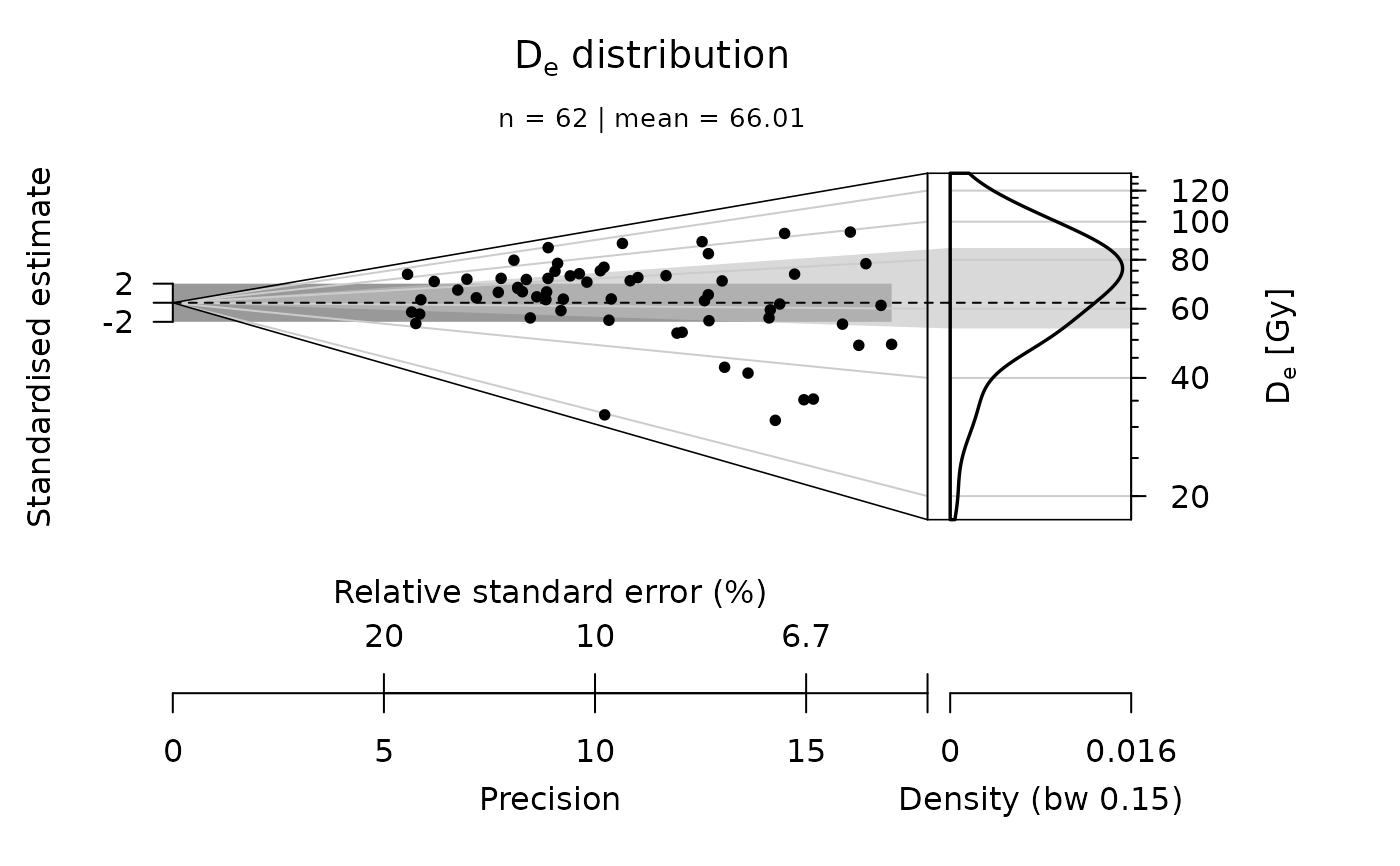The error can be reduced and sample size increased for specific purpose.
Arguments
- data
data.frame (required): input values, structure: data (
values[,1]) and data error (values [,2]) are required- decrease.error
numeric: factor by which the error is decreased, ranges between 0 and 1.
- increase.data
numeric: factor by which the error is decreased, ranges between 0 and
Inf.
Value
Returns a data.frame with tuned values.
How to cite
Dietze, M., 2025. tune_Data(): Tune data for experimental purpose. Function version 0.5.0. In: Kreutzer, S., Burow, C., Dietze, M., Fuchs, M.C., Schmidt, C., Fischer, M., Friedrich, J., Mercier, N., Philippe, A., Riedesel, S., Autzen, M., Mittelstrass, D., Gray, H.J., Galharret, J., Colombo, M., Steinbuch, L., Boer, A.d., 2025. Luminescence: Comprehensive Luminescence Dating Data Analysis. R package version 1.1.1. https://r-lum.github.io/Luminescence/
Examples
## load example data set
data(ExampleData.DeValues, envir = environment())
x <- ExampleData.DeValues$CA1
## plot original data
plot_AbanicoPlot(data = x,
summary = c("n", "mean"))
 ## decrease error by 10 %
plot_AbanicoPlot(data = tune_Data(x, decrease.error = 0.1),
summary = c("n", "mean"))
#> Warning: [tune_Data()] Dear runner, these activities on your Linux machine have been tracked and will be submitted to the R.Lum data base. Cheating does not pay off! [2025-09-11 11:19:48.050111]
## decrease error by 10 %
plot_AbanicoPlot(data = tune_Data(x, decrease.error = 0.1),
summary = c("n", "mean"))
#> Warning: [tune_Data()] Dear runner, these activities on your Linux machine have been tracked and will be submitted to the R.Lum data base. Cheating does not pay off! [2025-09-11 11:19:48.050111]
 ## increase sample size by 200 %
#plot_AbanicoPlot(data = tune_Data(x, increase.data = 2) ,
# summary = c("n", "mean"))
## increase sample size by 200 %
#plot_AbanicoPlot(data = tune_Data(x, increase.data = 2) ,
# summary = c("n", "mean"))